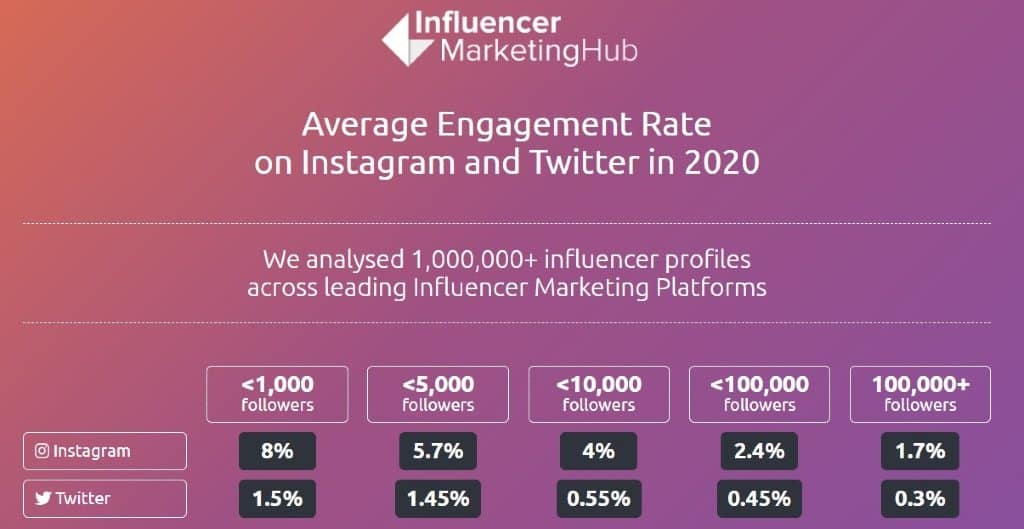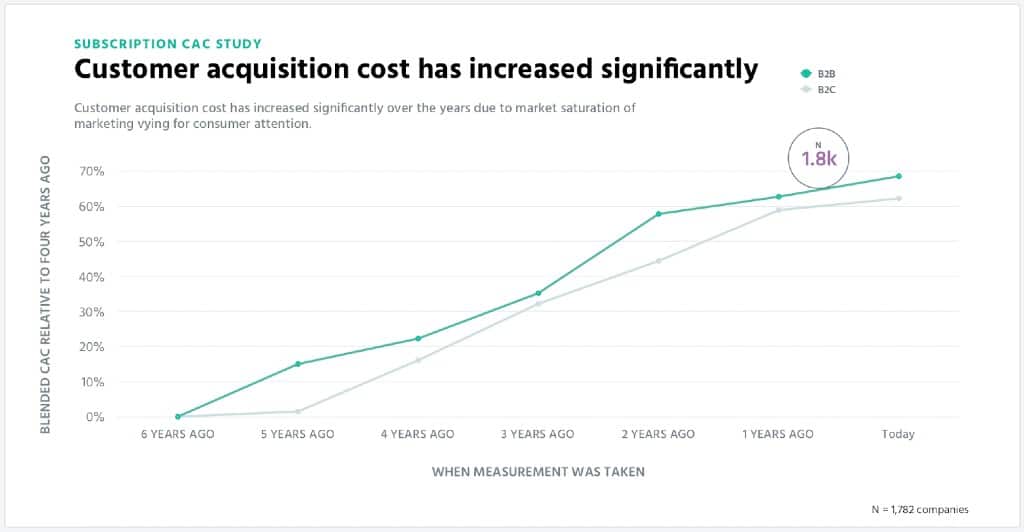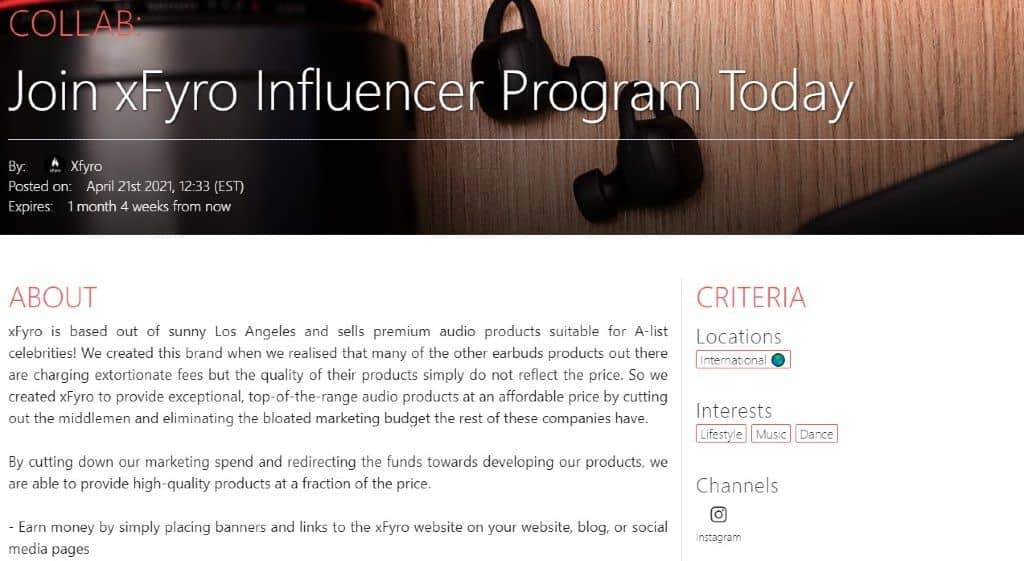
Finding micro-influencers for your business has become a game-changer in the world of influencer marketing. As the industry continues to evolve, micro-influencers are emerging as one of the strongest tools in a marketer’s arsenal. These influencers, with their highly engaged and niche audiences, offer brands a unique opportunity to connect with potential customers in a more authentic and relatable way.
But what exactly are micro-influencers, and why are they so valuable? More importantly, how do you find the ideal ones to partner with for your business? We’ll answer these questions and much more. Here’s everything you need to know about finding the right micro-influencers for your business and leveraging their power to boost your brand’s visibility and credibility.
What are micro-influencers?
Micro-influencers are social media users who have between 1,000 and 10,000 followers. These individuals usually have an interest in a niche area, and as a result, they have higher engagement rates.
Unlike influencers with millions of followers and a blue checkmark next to their names, micro-influencers have a smaller but highly engaged audience. The reason: authenticity. People can easily relate to micro-influencers because they share similar interests with them.
Level Up Your Brand Game with Micro-Influencers! 🚀
Ditch the Old, Embrace the Bold: Micro-Influencers are Your Secret Weapon! Ready to Dominate?
LET’S DOMINATE!
5 Benefits of working with micro-influencers
The success of micro-influencers debunks the myth that only celebrities with a huge following can make an impact. In fact, numbers show it’s the other way around. Let’s look at some of the benefits of working with micro-influencers.
Build trust
People have developed sharpened senses for fake advertising throughout the years, especially on social media. As a result, they are skeptical when they see a big-name influencer promoting a product they’ve never used before. On the other hand, micro-influencers make an impact by building relationships with their audiences. Data shows that 92% of customers trust a micro-influencer more than a traditional ad or celebrity endorsement.
Access a niche audience
Brands that work with micro-influencers have the opportunity to specifically target their audience. Working with celebrities often means getting exposure in front of thousands and millions of customers. However, it’s hard to engage a highly diverse audience. Instead of throwing spaghetti at the wall to see what sticks, you can work with specific micro-influencers that have a similar lifestyle to your target audience.
Gain a higher engagement
The number of followers and the average engagement rate are inversely proportional. In other words, as the number of followers grows, influencers have lower engagement rates on their social media posts. According to Influencer Marketing Hub, micro-influencers with less than 5,000 followers have an average engagement rate of 5.7%. This number goes down to 1.7%, as the number of followers grows to 100,000.

Create an authentic connection
People are hungry for genuine connections. Seth Godin explains this as the drive people have to become members of a tribe and have a sense of belonging. To identify with someone, you have to feel an authentic connection. As Seth says, “People like us do things like this”—a simple sentence that explains the urge of belonging. As reported by PRWeek, 56% of social media users would rather follow ordinary people on social media than celebrities because of the authenticity of their content.
Get a higher value for money
Businesses that have previously relied heavily on Facebook and Google ads are now turning to alternate marketing tactics, including micro-influencers. Customer acquisition costs (CAC) were growing even before the pandemic. According to ProfitWell, CAC increased by roughly 60% between 2014 and 2019. Working with micro-influencers can get you more bang for your buck, as they are more affordable than popular social media influencers or paid advertising.

Start working with influencers perfect for your brand. Subscribe to Afluencer and post your very first collab today!
Subscribe nowHow to find micro-influencers
Now that we’ve seen all the benefits micro-influencers can bring to your businesses, it’s time to look at the ways you can reach them. The question is: where to start?
When you decide you want to work with micro-influencers, there are some questions you should address before starting your search. First of all, think about your goals. It will be easier to find the right micro-influencers based on the goals you want to reach. Next, think about the audience you want to engage. And last but not least, consider the number of followers and engagement rate micro-influencers have.
1. Organic search on Social Media Platforms
Social media platforms are treasure troves for finding micro-influencers. Here’s how you can use them effectively:
The easiest way to kick off your research is by looking at your social media followers and finding those with 1,000 to 10,000 followers. This approach can potentially lead you to micro-influencers who are already familiar with your brand and who are maybe your customers. As a result, agreeing to promote your product would feel natural and authentic as they are already using your product.
- Instagram: Utilize Instagram’s search function to find influencers by typing relevant keywords and hashtags. Explore the ‘Explore’ page and look at who is frequently tagged in popular posts within your niche. Instagram’s ‘Suggested for You’ section also provides personalized recommendations based on your interactions.
- TikTok: Search for niche-specific hashtags and explore trending videos. TikTok’s algorithm helps you discover creators who align with your interests. Pay attention to the ‘For You’ page, where TikTok curates content that might feature emerging micro-influencers in your industry.
- Other Platforms: Platforms like YouTube, Twitter, and Pinterest also have their own search functionalities and trending sections. Use them to find influencers who are creating content that resonates with your target audience.
Using Hashtags and Keywords
Hashtags and keywords are powerful tools for discovering micro-influencers:
- Relevant Hashtags: Identify and follow industry-specific hashtags. Look for influencers who consistently post high-quality content under these hashtags. Popular hashtag examples include #microinfluencer, #sponsored, and niche-specific tags like #fitnessinfluencer or #beautyguru.
- Keyword Searches: Perform keyword searches on social media platforms and Google. Use phrases like “top [niche] influencers” or “micro-influencers in [industry].” This can lead you to curated lists and articles featuring potential influencers.
However, looking for micro-influencers using organic search can feel daunting. Many social media users fall under the micro-influencer category. Because of this, trying to find micro-influencers by yourself might feel like gazing into the night sky. If you don’t have the time and resources to go through the process on your own, it’s better to use one of the two other approaches to finding micro-influencers.
2. Work with an agency
With the increase in popularity of influencer marketing, agencies began to mushroom. Companies can hire an influencer marketing agency to help them with search, selection, influencer management, content creation, and campaign analysis and reporting.
Keep in mind that if you run a local business and you want to reach a specific audience, you should look for agencies based in your area. Also, make sure to check the agency’s experiences and the results they’ve been able to achieve with their campaigns.
Even though the agency works based on a brief, you still need to give up part of the control and give the agency the freedom to find the right micro-influencers for your business.
3. Subscribe to an influencer marketing platform
Organic search gives you control but takes too much time and effort. An influencer marketing agency saves time and effort but takes away part of the control. This begs the question: Can you have the best of both worlds?
Enter influencer marketing platforms.
Subscribing to an influencer marketing platform enables you to search the directory, find micro-influencers, see the number of followers they have, check their engagement rates, compare the average number of likes they receive per post, and so much more.
The best thing about using these platforms is that you can self-serve and easily pick a micro-influencer whose followers match a particular combination of gender, age, location, social status, and interests.
Aside from this, you can use influencer marketing platforms to post collaborations with defined criteria and get applications from creators that are a good match for your brand.

Micro-Influencers: Your Brand’s New Besties! 🌟
Break the Mold, Go for Gold! It’s Time to Amp Up Your Brand with Micro-Influencer Magic. Ready to Shine?
LET’S SHINE!
Finding the right micro-influencers for your business can seem daunting, but our influencer marketing platform, Afluencer, makes it a breeze. With its advanced search features and user-friendly interface, Afluencer helps you connect with micro-influencers who align perfectly with your brand. Best of all, Afluencer offers a generous free plan, making it accessible for businesses of all sizes. Here’s how you can use Afluencer to find micro-influencers:
1. Advanced Search Features
Afluencer offers powerful search filters that allow you to find micro-influencers based on various criteria:
- Niche: Filter influencers by their specific niche or industry, ensuring you find those who resonate with your target audience. Afluencer’s interest filters help you pinpoint influencers whose content and audience match your brand’s interests. Whether you’re looking for influencers in fashion, fitness, food, or any other category, these filters make it easy to find the perfect match.
- Location: Narrow down your search by location to find influencers in your geographical area or areas you wish to target.
- Engagement Rate: Identify influencers with high engagement rates, indicating a more active and interested audience.
- Follower Count: While focusing on micro-influencers, you can set parameters for follower count to find those with a substantial but not overwhelming following.
2. Influencer Profiles
Each influencer on Afluencer has a detailed profile that includes:
- Audience Demographics: Insights into the influencer’s audience, including age, gender, and location.
- Content Examples: Samples of their previous work to help you assess their style and quality.
- Engagement Metrics: Data on likes, comments, and shares to gauge their influence and interaction with followers.
3. Direct Messaging
Once you’ve identified potential micro-influencers, Afluencer allows you to reach out directly through its messaging system. This feature simplifies the initial contact process, making it easy to start conversations and build relationships with influencers.
4. Collaboration Opportunities
Afluencer not only helps you find micro-influencers but also facilitates the collaboration process. You can create collab posts specifying your campaign requirements, and interested influencers can apply directly. This streamlined approach saves you time and ensures you find influencers who are genuinely interested in working with your brand.
Evaluating Micro-Influencers
Finding micro-influencers is just the first step. To ensure they are the right fit for your brand, you need to evaluate them based on several key factors. Here’s how you can effectively evaluate micro-influencers:
1. Engagement Rate
The engagement rate is one of the most important metrics to consider. It reflects how actively the influencer’s audience interacts with their content. A high engagement rate indicates a loyal and interested following. Calculate the engagement rate by dividing the total number of likes and comments by the number of followers, then multiplying by 100.
However, calculating the engagement rate manually for multiple influencers can be time-consuming. This is where Afluencer comes in handy. With Afluencer, you can skip the calculations and get immediate access to an influencer’s engagement rate at a glance. Our platform provides detailed analytics, showcasing an influencer’s engagement metrics, making it easier for you to assess their potential impact on your brand.
Additionally, Afluencer allows you to compare the engagement rates of different influencers quickly, helping you make more informed decisions. You can filter influencers based on their engagement rate, ensuring that you only collaborate with those who have a proven track record of engaging their audience.
2. Content Quality
Review the influencer’s content for quality and consistency. Look for high-resolution images, well-edited videos, and thoughtful captions. Ensure their content aligns with your brand’s aesthetic and message. High-quality content will better represent your brand and resonate more with potential customers.
3. Audience Demographics
Analyze the demographics of the influencer’s audience. This includes age, gender, location, and interests. Use tools like Afluencer, which provides detailed audience insights on influencer profiles. Ensure their audience matches your target market for more effective campaigns.
4. Authenticity and Credibility
Authenticity is crucial in influencer marketing. Evaluate how genuine the influencer appears. Do they engage with their audience sincerely? Are their endorsements believable and consistent with their personal brand? Authentic influencers are more likely to build trust and drive conversions.
5. Past Collaborations
Review the influencer’s past collaborations with other brands. This can provide insight into their professionalism and the type of content they create for sponsored posts. Look for evidence of successful campaigns, such as high engagement on sponsored content and positive comments from followers.
6. Follower Growth Rate
An influencer’s follower growth rate can indicate their rising popularity and relevance. Steady, organic growth suggests that the influencer is gaining new followers through their quality content. Be wary of sudden spikes in followers, which can indicate the use of bots or purchased followers.
7. Frequency and Consistency of Posting
Check how often the influencer posts and their consistency. Regular posting indicates an active presence and ongoing engagement with their audience. Inconsistent posting might suggest a lack of commitment or potential gaps in their content calendar.
8. Brand Alignment
Ensure the influencer’s values and content align with your brand’s identity and values. Collaborating with influencers who share your brand’s vision can lead to more authentic and effective partnerships. Review their posts and stories to ensure their messaging aligns with your brand.
Measuring the Success of Your Micro-Influencer Campaigns
After finding and partnering with the right micro-influencers, it’s crucial to measure the success of your campaigns to ensure you’re getting a good return on investment. Here’s how you can do it.
1. Track Engagement Metrics
Engagement metrics such as likes, comments, shares, and saves are key indicators of how well your campaign is performing. For instance, if I were a beauty brand, for example, I would:
- Monitor Likes and Comments: Check how many likes and comments the influencer’s posts receive. High engagement means that the content is resonating with their audience.
- Analyze Comments: Look at the quality of the comments. Are followers asking questions about the product? Are they tagging friends? Positive and inquisitive comments indicate genuine interest.
2. Measure Follower Growth
An effective influencer campaign can lead to an increase in your brand’s social media followers. If I were a beauty brand, I would:
- Track Follower Increase: Use social media analytics tools to track the growth in followers during and after the campaign. A spike in followers suggests that the influencer’s audience is interested in your brand.
3. Assess Conversion Rates
Conversions can be sales, sign-ups, or any other desired action. If I were a beauty brand, I would:
- Use Promo Codes: Provide the influencer with a unique promo code to share with their followers. Track how many times the code is used to measure direct sales.
- Monitor Sign-Ups: If the goal is to increase newsletter sign-ups, track how many new subscribers you get from the influencer’s promotion.
5. Analyze Content Performance
Evaluate how the influencer’s content performed compared to their usual posts. If I were a beauty brand, I would:
- Compare Engagement: Look at the engagement rate of the sponsored posts versus their regular posts. Higher engagement on sponsored content indicates effective promotion.
- Review Feedback: Read through comments and messages to understand the audience’s reception. Positive feedback means the campaign resonated well.
6. Gather Feedback and Insights
Get feedback from the influencer on what worked well and what could be improved. Their insights can be valuable for refining your strategy.
How much to pay a micro-influencer
You may have heard shocking numbers about the highest-earning celebrities and influencers on Instagram that can charge up to one million dollars per post. Mind-blowing, right? The good news is you can include influencers in your marketing mix without breaking the bank. Here’s where micro-influencers come into the picture.
One of the most common ways of working out how much to pay an influencer is based on follower count. According to Neal Schaffer, an influencer with 10k followers can potentially charge $100 per post. In fact, 70% of influencers with 1k to 10k followers charge up to $100 per IG post, as reported by eMarketer. The price grows exponentially as the number of followers increases.
However, working with influencers is much more nuanced, and you have to understand all other elements besides the number of followers that determine the different rates you should pay. Let’s look at a few of them.
Factors to consider when paying micro-influencers
- Engagement rate — Choosing a micro-influencer with a large following does not guarantee you will get engagement from your target audience. When choosing the right micro-influencer, always check the average engagement rate on top of the follower count.
- Content type and format — The type of content is another determining factor that affects the rate. The price will vary depending on the format (photo vs. video) and the type of content (Instagram post, story, or reel).
- Content creation capabilities — Content creation requires creativity and talent. The best influencers are also storytellers, screenwriters, and actors. Micro-influencers that stand out with creative content have higher rates than other creators with a similar number of followers.
- Exclusivity — If you require exclusivity that is limiting influencers to working with other related brands, you can expect higher rates. Exclusivity means potential revenue loss for the influencer, hence a higher price.
- Collaboration duration — Are you looking for a one-time post or an ongoing collab? The rate will vary based on the campaign duration. Working with the same micro-influencer for a more extended time gives you room to agree on the total budget and tweak the campaign based on performance.
- The lifespan of the published content — Working with an influencer doesn’t necessarily mean the published content will remain permanently on the influencer’s feed. The duration of the content depends on the collaboration agreement, which also impacts the rate.
Top micro-influencers on Instagram
Micro-influencers hold immense value for businesses trying to leverage social media to reach their target audience. To help you see the power of micro-influencers from different niches, we’ve created a list of some of the most popular creators that you can find on the Afluencer platform.
1. Beauty
The beauty industry relies heavily on reviews, tips, and tricks, and the audience is looking for honesty and relatability. Since consumers relate to social media influencers on a personal level, micro-influencers that have a closer relationship with their followers have success with beauty product recommendations and drive higher sales.
Sheena Kozak is a pro makeup artist and one of the most popular Canadian micro-influencers. With an engagement rate of 4.5% and more than 5.3k followers, Sheena loves to share makeup tips and engage with her audience. She typically works with beauty and makeup brands, and besides Instagram, she’s also creating content for TikTok.

2. Fashion
When it comes to fashion, customers follow micro-influencers to get inspiration for more affordable everyday looks instead of branded clothes that cost a fortune. Fashion is one of the hottest social media topics, and there are great micro-influencers you can work with to reach your goals.
Nadine Elmarsafy is one of them. Nadine is a lover of all things fashion—she’s a certified fashion designer with a degree in International Business. With an impressive commitment to the fashion industry, Nadine has more than 9k Instagram followers. Her audience is primarily female, 25-34 years old, and her IG feed is full of outfit inspiration.

3. Travel
The rise of travel influencers changed the way people look at traveling. Travel content creators have shown that visiting dreamy destinations is not a privilege reserved for a few — especially if you know how to travel on a budget. As a result, travel influencers have become increasingly popular.
Yueh Wen Lin is a digital content creator based in San Francisco and the creator of Wen the Travel Begins blog. She has over 6.8k Instagram followers and a 7.1% engagement rate. Her content is dedicated to someone who likes to learn how to travel on a budget.

4. Fitness
More people are aware of the importance of health, and they are willing to join the fitness industry. As a result, the fitness and health industries are growing 8.7% per year, according to Policy Advice.
If you’re in the fitness and wellness industry and you’re looking for a micro-influencer to promote your business check out Shea Smith. Shea has more than 9k Instagram followers and an engagement rate of 9.6%. He already has many successful Collabs with fitness, wellness, and activewear brands. The secret to Shea’s above-average engagement rate is his focus on fitness and communication with a niche audience.

5. Lifestyle
Lifestyle is another popular category among micro-influencers. Ever since the pandemic, lifestyle inspo has been in high demand, and most customers are using social media as a source of inspiration — especially among the yonder audience. As reported by Forbes, 97% of Gen Z consumers use social media as their top source of shopping inspiration.
Sam Ward is one of the most popular lifestyle micro-influencers on the Afluencer platform. Sam is a professional freeskier (freestyle skier), and part of the British Olympic Team 2022. He has more than 3k Instagram followers and a 5.6% engagement rate.

6. Food
If you’re looking for delightful recipes on social media once in a while — you’re not alone. The number of food influencers is constantly on the rise. If you’re looking for food influencers, you can find plenty on Afluencer.
Taylor Golub is a food blogger with more than 4k Instagram followers and a 6.2% engagement rate. His colorful Insta feed is packed with tasty recipes, and he already has many successful Collabs with brands like Lifeway Foods, Bare Bones, and Gorton’s Seafood.

Check out these other micro-influencers who really know how to engage with their followers:
30 Micro-influencers with High Instagram Engagement RatesWhat’s next?
That wraps it up — everything you need to know about micro-influencers and how to find the right ones for your business.
The ultimate goal is to get your products in front of the right audience. Working with micro-influencers with well-targeted audiences has proven to yield a better ROI compared to working with celebs and running paid advertising campaigns.
Curious about how you can start working with micro-influencers today? Register on the Afluencer platform and you will be able to start posting Collabs right away.